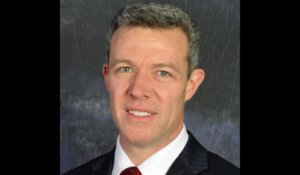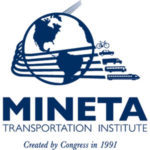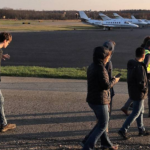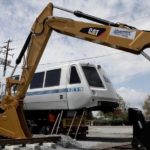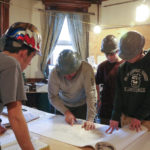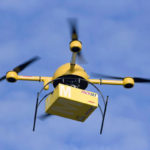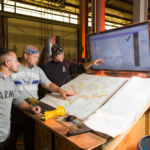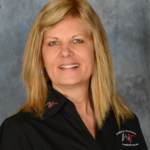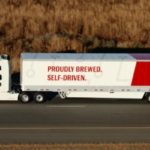Author: Omid Sarmad
Transportation is a People-Centered Issue
JIM TYMON, AMERICAN ASSOCIATION OF STATE HIGHWAY AND TRANSPORTATION OFFICIALS, EXECUTIVE DIRECTOR
There are several critical workforce challenges facing the U.S. transportation sector today and state departments of transportation are taking steps to “sound the alarm” about the situation.
Roger Millar, secretary of the Washington State Department of Transportation, provided some stark numbers on his agency’s workforce recruiting and retention situation during a panel discussion in January at the 2019 Transportation Research Board’s annual meeting in Washington, D.C.
“Over 2,000 are engineering employees and 41 percent of them are eligible to retire; we have 2,000 maintenance workers and 31 percent of them are eligible to retire,” Millar said, noting that WSDOT employs 7,000 across Washington state.
“We have 2,000 employees in our ferry system and 75 percent of the ferry captains are eligible to retire, along with 30 percent of vessel workers and a quarter of the port facility staff.”
A lack of interest on the part of younger workers in transportation careers is one aspect of the recruitment challenge facing state DOTs at this juncture; a lack of interest that exists well beyond the ranks of traditional engineering disciplines, according to research by the Brookings Institution. “Just as our physical infrastructure systems are aging and in need of attention, so too are the workers who design, construct, operate, and oversee these systems,” noted Joseph Kane, Senior Research Associate and Associate Fellow of the group’s metropolitan policy program. “The problem is that many of them are nearing or are eligible for retirement, and there is not a strong training pipeline to educate and equip a new generation of talent with the skills they need.”
State governments, in particular, face acute difficulties in attracting, building, and retaining “critically important talent and workforce skills,” according to a report compiled by the National Association of State Chief Administrators, with help from global consulting company Accenture and human resources provider NEOGOV. Those difficulties include changes in workforce expectations, especially the reduced appeal of “lifetime employment” among younger generations; less-competitive salaries; rising competition from the private sector; and negative perceptions about working for the government.
How do we change such perceptions, especially of state DOTs? The first is to take a more “holistic approach” to workforce recruiting and retention compared to the past – one that includes building a more “diverse” workforce that includes more women and minorities to help provide new and different perspectives on transportation needs. It’s also about making careers in transportation, less about raw infrastructure, such as roads and rails, and more about how that infrastructure benefits people in their daily lives – whether they are shipping packages to loved ones, traveling to and from work, getting the kids to and from school, or going on vacation.
“At the end of the day, transportation represents freedom; the freedom to move where, when, and how we want. It gives us opportunities that would not exist otherwise,” Carlos Braceras, director of the Utah Department of Transportation and the American Association of State Highway and Transportation Officials 2018-2019 president, explained recently.
He added that communicating the “positives” about transportation is also critically important in terms of attracting a new generation of workers into the transportation field.
“We have this bubble [among state DOTs] where a large group of people are starting to retire,” Braceras said. “So we see this constant need for new employees, but also for new skill sets because more and more of the technology [in transportation] is changing. Today it is almost more important how we operate our transportation system than how we built it because there is so much more data going into our decision-making processes today; helping us make better decisions faster and with better outcomes.”
That’s why transportation needs to be more “people-centered” today, both for its workforce and the citizens it serves. For the mobility that transportation provides is what sustains the economic vitality of our nation and the quality of life its citizens enjoy.
Jim Tymon is the Executive Director of the American Association of State Highway and Transportation Officials (AASHTO), a non-profit, non-partisan association that supports and represents the interests and missions of state departments of transportation. His experience includes service in key Congressional and federal agency roles, as well as non-profit association management.
As AASHTO Executive Director, Tymon oversees a staff of 120 professionals who support their members in the development of transportation solutions that create economic prosperity, enhance quality of life, and improve transportation safety in U.S. communities, states, and the nation as a whole. AASHTO is now in its second century of service to state departments of transportation and their highly skilled employees.
Utah DOT ‘Field Trip’ Entices Students To Explore Transportation Careers
With teams of secondary school students flocking to Park City, UT, to compete in the final round of the 2019 American Association of State Highway and Transportation Officials National Bridge Challenge competition – an event that is part of the organization’s annual spring meeting – the Utah Department of Transportation engaged in a “future workforce recruiting” effort.

On May 20, the day before the bridge competition finals, the Utah DOT organized a tour of its Traffic Operations Center in Salt Lake City, busing the students, their parents, and teachers to the facility for a day-long tour, complete with a buffet lunch.
The tour included a detailed overview of the TOC’s traffic camera control room and its weather center, where up 12 meteorologists work to analyze statewide weather patterns that could impact roadway conditions.
The students also visited with one of Utah DOT’s incident management teams parked in front of the building and attended presentations on structural engineering, traffic signal design and development, drone operation, and autonomous vehicles.
“You can’t stop learning in transportation,” emphasized Blaine Leonard, Utah DOT’s technology and innovation engineer, during his presentation to the students.

Leonard – a key architect of the agency’s “first-in-the-nation” connected and autonomous vehicle or CAV system that uses Designated Short Range Communications or DSRC radios to help Utah Transit Authority buses “talk” to traffic signals so they arrive at their stops on time – stressed that “everything I work with now in transportation was invented after I graduated from college. And the day may come when we potentially won’t need to drive. And you – and your children – will be at the forefront of that.”
Matt Dunn, assistant district engineer of maintenance with the Mississippi Department of Transportation – who served as the announcer for the event – noted that all of the students participating in the competition represented “the future” of the transportation industry.

“We need young minds like theirs to think outside the box and help strengthen our transportation system,” he explained. “We need young people to be interested in transportation and pursue these jobs so they can provide the future workforce for the state DOTs. And its events like these are what attracts middle and high school students to the field of transportation engineering.”
“The students of the future presenting here are unbelievable,” added Carlos Braceras, Utah DOT’s executive director and AASHTO’s 2018-2019 president, during the event. “We hope to help them design their future through such competitions, for we never have enough engineers in transportation.”
NETWC Spotlights
Check out the programs and people who have recently been highlighted by the Northeast Transportation Workforce Center!
|
|
Aviation Explorer PostToddy Thomas Middle School from Fortuna, California won the 2018 Garrett Morgan Sustainable Transportation Competition with their piezoelectric project titled “Small Steps, Big Difference.” Sponsored by the Mineta Transportation Institute, the Garrett Morgan Competition fosters student interest in transportation-related careers. Using the MTI Teacher’s Guide, and guided by their sponsor, Caltrans District 1, Toddy Thomas presented a project that would harness the energy of the human step to power their school bus. |
|
|
Aviation Explorer PostOn April 18th, a new Aviation Explorer Post was started at Morristown Airport. The goal of the post is to help young men and women, ages 14-20, learn about careers in aviation. At the first meeting, the Explorers toured the airport and discussed which careers the post will focus on at future meetings. Pilot, air traffic controller, maintenance, and design are some of the areas that will be covered by active professionals. The post is chartered to DM Airports Ltd., and plans to meet on the first and third Wednesday of each month. New Explorers are welcome and can register at https://tinyurl.com/aviationexploring. |
|
|
More women leaders needed for Transportation ProjectsWomen leaders make a difference. Minority leaders make a difference. Small business leaders make a difference. Our transportation system touches everyone in our diverse population, so it’s critical to gain input, perspectives and talent from all parts of our community. Better representation in the leadership ranks will help ensure major infrastructure projects are designed and built to meet the wide-ranging needs of our entire community. Inclusive leadership won’t happen by accident; luckily, there are people and companies working to make it a reality. |
|
|
AutoCare Association Participates in Workforce ConferenceBill Hanvey, president and CEO of the Auto Care Association, recently participated in the National Association of Workforce Boards’ “The Forum 2018” annual conference where he and other representatives from the nation’s largest employment sectors met to discuss solutions for finding and retaining qualified employees. |
|
|
St. Johnsbury Academy Students Learn Trades Right On CampusUnlike most programs in the state, Career and Technical Education at St. Johnsbury Academy is integrated into the larger academic school. As a result, 80 percent of the full student body takes at least one CTE course during their academic career, and two-thirds of the students who focus their time in CTE go on to secondary education in their trade field or employment in that field. In this program you’ll hear from five students and two teachers in the CTE program at the Academy. They are kids who love to “work with their hands” and “learn by doing,” hoping to graduate from high school with employable skills. |
|
|
NJ Strives to Stay Ahead in Transportation, Logistics, and DistributionNew Jersey’s business and government leaders recognize the value in the state becoming a major center of distribution and logistics, so they are looking for its education system to help New Jersey remain a step ahead. Business leaders say they have plenty of jobs available in this sector and want colleges to evolve, so well-trained workers are available here in the Garden State well into the future. |
|
|
Electrify Pennsylvania Transportation SystemThe Pennsylvania Department of Environmental Protection soon will begin recommending projects to receive funding from the state’s settlement allocation (nearly $120 million) to help right this wrong and offset the vehicles’ additional pollution. State leaders should select projects that achieve long-term emissions reductions and help focus our transportation sector on building infrastructure for clean electric vehicles. |
|
|
UMES Summer Transportation Institution Pushes to Stimulate Interest in STEM CareerMiddle schoolers participated in the Summer Transportation Institution at UMES during June 19th to July 7th, 2017. This program provides awareness and hopes to stimulate interest towards transportation and STEM-related careers. Students are able to explore these fields through field trips and hands on activities. |
|
|
3 Reasons to Hire a HeroAs thousands of American employers know, hiring veterans is a smart move. There are more than 7 million veterans in the U.S. labor force, meaning they’re either employed or actively looking for work. If you’re curious about working with veterans, here are three great reasons to hire one: |
|
|
Forget Autonomous Cars; Autonomous Ships are Already HereThe Women In Trucking Association (WIT) is proud to announce that Insights Success magazine has named Ellen Voie, its president and CEO, as one of the “30 Most Empowering Women in Business.” Voie founded WIT in 2007 to promote the employment of women in the trucking industry, remove obstacles that might discourage women from considering a career in transportation, and celebrate the successes of association members. WIT has grown dramatically over the past decade and now exceeds 4,500 members. |
|
|
Women In Trucking Association CEO Named One of the “30 Most Inspirational Leaders in Business”The Women In Trucking Association (WIT) is proud to announce that Insights Success magazine has named Ellen Voie, its president and CEO, as one of the “30 Most Empowering Women in Business.” Voie founded WIT in 2007 to promote the employment of women in the trucking industry, remove obstacles that might discourage women from considering a career in transportation, and celebrate the successes of association members. WIT has grown dramatically over the past decade and now exceeds 4,500 members. |
 |
Container shipping takes on digital initiatives“Maersk’s partnership with IBM, announced in March, to develop blockchain solutions for freight is one example of potential mutual benefit. According to one estimate, shippers spend twice as much on shipping processes, including documentation, as they do on actual freight movement.” |
|
|
Transportation Technology Wises UpSelf-driving trucks, intelligent highways and freight-hauling apps are changing the way goods can be transported and delivered. Semi-autonomous vehicle technologies also offer a potential solution to the shortage of truck drivers, with many drivers having recently retired from the industry. These advanced technologies may actually extend the careers of aging drivers and attract even more candidates to the industry, including women. |
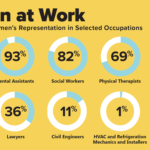 |
12 Stats About Working WomenThis Women’s History Month, we’re taking a look at women’s contributions to the U.S. labor force. Here are some noteworthy statistics we’ve rounded up! |
 |
Graduate Student Internship in Division of Capital Investment Planning & DevelopmentThe NJDOT Bureau of Research has issued this posting on behalf of the division of Capital Investment Planning & Development. The CIPD requires the assistance in the identification, preparation, and submission of project modifications or amendments to the STIP in accordance with the MOU for TIP/STOP changes between the three MPOs, NJ Transit, and NJDOT, fully executed October 2012. |
 |
Why Apprenticeships Are Taking OffFor the last decade, the Manpower Group, a human resources consultancy, has tracked the skills gap. It found that employers across the globe are facing the most acute talent shortage since the recession in 2007. Of the more than 42,000 employers surveyed, 40 percent said they are experiencing difficulty filling roles. |
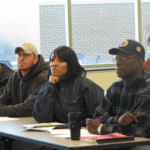 |
Operating Engineers Training ProgramsOver the years, IUOE local unions throughout the U. S. and Canada have developed and implemented comprehensive training programs that are widely recognized as the best in a number of industries. Our aim has been and continues to be to provide highly skilled, safe, and productive heavy equipment operators and stationary/facilities engineers to the construction, pipeline, stationary and environmental industries. |



